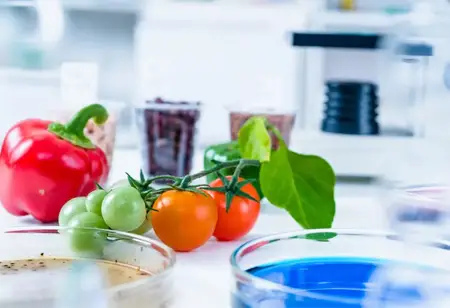Thank you for Subscribing to Food Business Review Weekly Brief
Transformation of the Food Manufacturing Sector by Automation and Robotics
Primary and secondary processing are the two steps in the food processing method.

By
Food Business Review | Wednesday, March 03, 2021
Stay ahead of the industry with exclusive feature stories on the top companies, expert insights and the latest news delivered straight to your inbox. Subscribe today.

The food manufacturing industry slowly incorporates automation and robotics in the processing of food services.
FREMONT, CA: To the market research report, the robotics industry is growing at a 17% CAGR, with global robotics investment predicted to extend to $135 billion by 2019. The electronics and automotive industries, which mass-produce items with several separate components that should assemble precisely, are the two largest purchasers of robots. In addition, other sectors, such as healthcare, rapidly integrate robotics into their operations. However, the food industry is one field where robots are narrowly used.
Check Out This: Auto Business Outlook
Challenges and Benefits of robot integration in the field of food manufacturing:
The tendency that the raw materials entering the pipeline are without the standard dimensions configured into a robot causes the incorporation of robotics into the food industry's problems. For example, a robot developed to peel an apple is more difficult to program because two apples do not have equal dimensions.
The Profits of using robots in food processing are delightful:
1. Robots can achieve steady outcomes efficiently and quickly compared to human employees.
2. The care related to health and safety is lower for the food manufacturing companies as robots can remain under extreme conditions like high temperatures, which may be impossible for humans.
3. Robots can help companies reduce production expenses without training or breaks by producing higher profits, particularly in continuous cake decorating and chicken deboning.
Primary and secondary processing are the two steps in the food processing method. First, raw materials are converted into food items in primary food processing. These food supplies are then converted into edible products in secondary food processing. Due to the various levels of uniformity in the raw materials used in each process, robots are slowly being introduced into both steps with varying degrees of success.
The problems faced by various food industry sectors are primarily determined by the raw materials used in each sector and whether products must be supplied in batches or constantly. Therefore, allowing robots to analyze every individual raw material before treatment may be significant in primary processes. Teaching human workers to work alongside robots can become a more significant challenge in secondary processes.
The food industry must consider where robots could become a good investment and how to shift human workers from the positions that robots are taking over.






